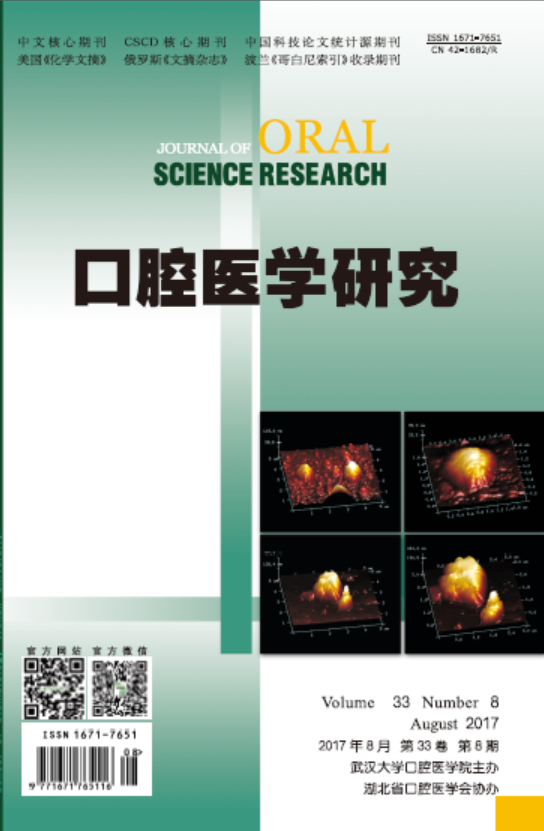|
|
Effects of Curcumin Combined with Dickkopf-1 on Proliferation and Apoptosis of Oral Squamous Cell Carcinoma Cells.
WANG Bi,SHAO Xiao-lin, ZHAO Yu.
2017, 33(8):
877-880.
DOI: 10.13701/j.cnki.kqyxyj.2017.08.019
Objective: To investigate the effect of curcumin combined with Dickkopf-1 on proliferation and apoptosis of oral squamous cell carcinoma cells. Methods: Cell proliferation was detected after 0, 5, 10, 20, 40, 80μmol/L curcumin treated CAL27, Tca8113, SCC-4 cells for 24, 48 and 72h, and calculated the value of IC50. The cells were divided into control group, curcumin group, Dickkopf-1 group, and Dickkopf-1+curcumin group. After treatment for 48h, the cell proliferation was detected by CCK8 test, the apoptosis was detected by flow cytometry, and the expressions of Cleaved caspase3, β-catenin, and CyclinD1 protein were detected by Western blot. Results: The cell inhibition rates at different concentrations of curcumin treated CAL27, SCC-4 and Tca8113 cells for 24, 48 and 72h were significantly higher than the cell inhibition rate at 0h, and the cell inhibition rate increased with the prolongation of time and the increase of the concentration (P<0.01). According to the IC50 value, Tca8113 cells and 30 μmol/L curcumin were chosen as a follow-up study. Conclusion: Curcumin and Wnt/β-catenin pathway inhibitor Dickkopf-1 can inhibit the proliferation and promote apoptosis of oral squamous cell carcinoma cells. The combination effect of both is stronger than that of curcumin or Dickkopf-1 alone.
References |
Related Articles |
Metrics
|

